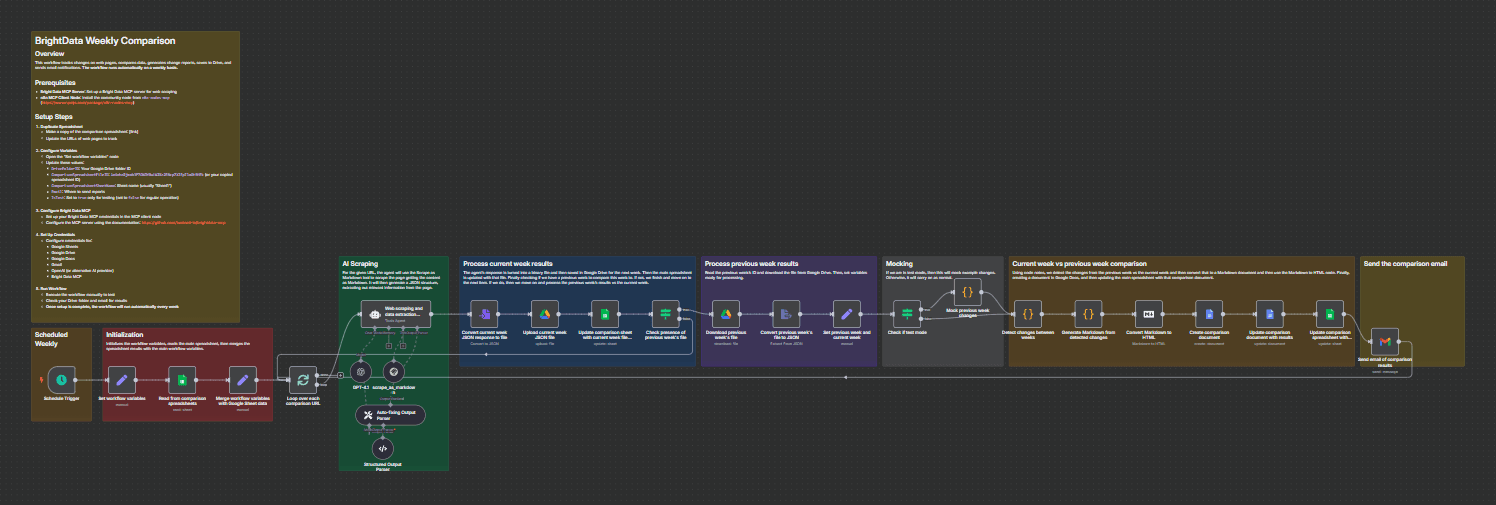Back to Templates

Note: This template is for self-hosted n8n instances only
You can use this workflow to fully automate website content monitoring and change detection on a weekly basis—even when there’s no native node for scraping or structured comparison. It uses an AI-powered scraper, structured data extraction, and integrates Google Sheets, Drive, Docs, and email for seamless tracking and reporting.
Main Use Cases
- Monitor and report changes to websites (e.g., pricing, content, headings, FAQs) over time
- Automate web audits, compliance checks, or competitive benchmarking
- Generate detailed change logs and share them automatically with stakeholders
How it works
The workflow operates as a scheduled process, organized into these stages:
1. Initialization & Configuration
- Triggers weekly (or manually) and initializes key variables: Google Drive folder, spreadsheet IDs, notification emails, and test mode.
2. Input Retrieval
- Reads the list of URLs to be monitored from a Google Sheet.
3. Web Scraping & Structuring
- For each URL, an AI agent uses Bright Data's
scrape_as_markdowntool to extract the full web page content. - The workflow then parses this content into a well-structured JSON, capturing elements like metadata, headings, pricing, navigation, calls to action, contacts, banners, and FAQs.
4. Saving Current Week’s Results
- The structured JSON is saved to Google Drive as the current week’s snapshot for each monitored URL.
- The Google Sheet is updated with file references for traceability.
5. Comparison with Previous Snapshot
- If a prior week’s file exists, it is downloaded and parsed.
- The workflow compares the current and previous JSON snapshots, detecting and categorizing all substantive content changes (e.g., new/updated plans, FAQ edits, contact info modifications).
- Optionally, in test mode, mock changes are introduced for demo and validation purposes.
6. Change Report Generation & Delivery
- A rich Markdown-formatted changelog is generated, summarizing the detected changes, and then converted to HTML.
- The changelog is uploaded to Google Docs and linked back to the tracking sheet.
- An HTML email with the full report and relevant links is sent to recipients.
Summary Flow:
- Schedule/workflow trigger → initialize variables
- Read URL list from spreadsheet
- For each URL:
- Scrape & structure as JSON
- Save to Drive, update tracking sheet
- If previous week exists:
- Download & parse previous
- Compare, generate changelog
- Convert to HTML, save to Docs, update Sheet
- Email results
Benefits:
- Fully automated website change tracking with end-to-end reporting
- Adaptable and extensible for any set of monitored pages and content types
- Easy integration with Google Workspace tools for collaboration and storage
- Minimal manual intervention required after initial setup